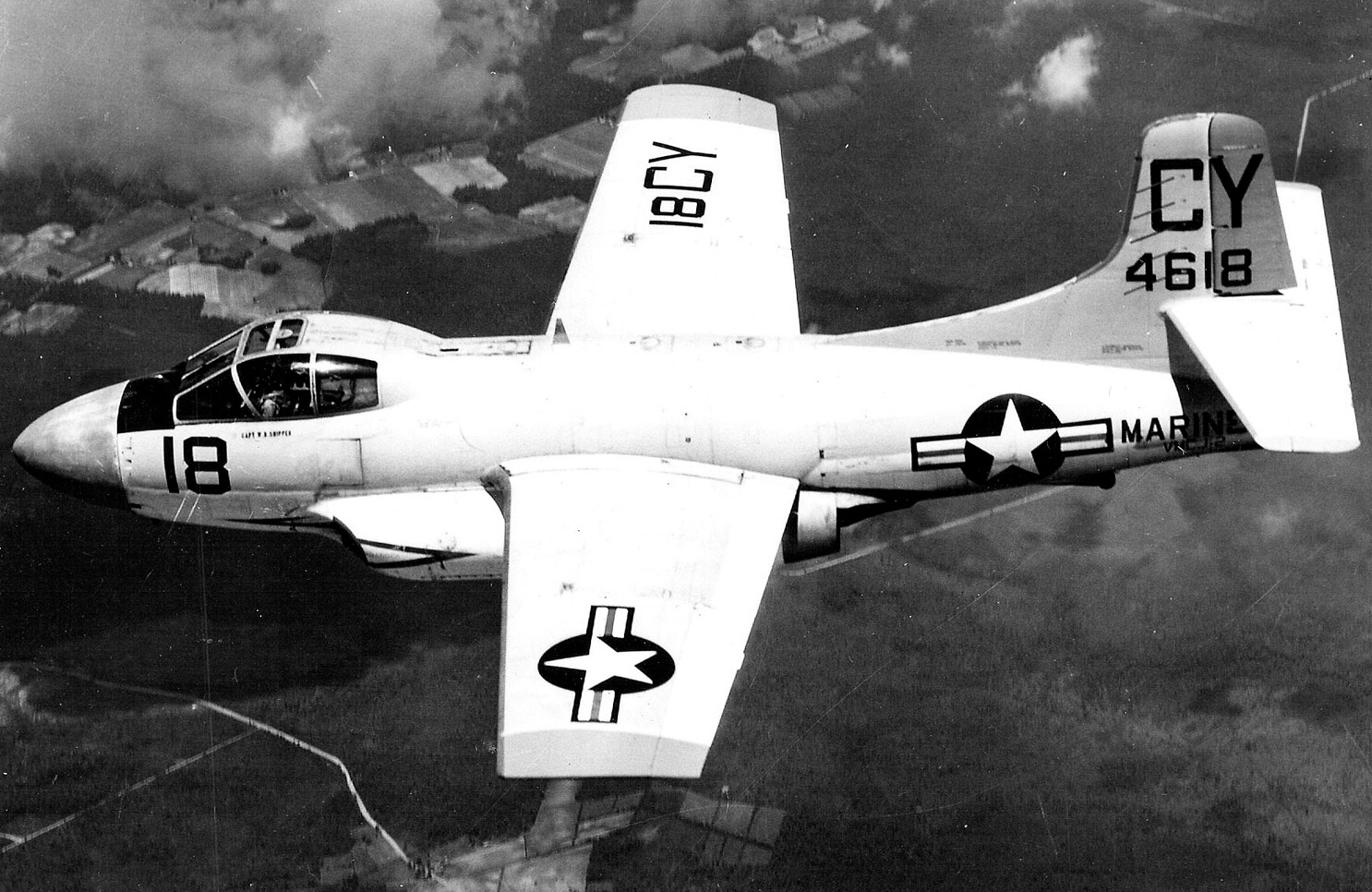
When individuals mention renowned jet fighters, names such as the F-86 Sabre or MiG-15 tend to reign supreme. However, behind the limelight was the Douglas F3D Skyknight—a hulking, no-nonsense machine that silently etched its space in the history of flight. It was not sexy, it was not quick, and it was not beautiful, but it did the trick like no other. The Skyknight gained its fame not from spectacular dogfighting but from consistent performance in nighttime operations and electronic warfare, a true unsung hero through two wars.

The history of the Skyknight came about during the final months of World War II, when the U.S. Navy made a challenging request for a jet-powered night fighter that was carrier-capable in any weather. The plane required two-crew accommodations, an onboard radar system, and speeds of up to 500 mph at 40,000 feet. Douglas Aircraft’s Ed Heineman, a design legend in his own right, played it practical. Instead of pursuing style, they aimed for functionality—radar capability and copilot cooperation in the cockpit. The result was a broad-bodied jet with straight wings and side-by-side seating for the pilot and radar man. It appeared clumsy enough to be nicknamed “Willie the Whale,” but beneath its clumsy appearance was a specialized instrument for night fighting.

What really distinguished the Skyknight was its radar. It had an entire system onboard that enabled it to search, track, and strike at targets independently—something unusual for the era. This autonomy enabled it to pursue enemy planes through clouds, at night, or in adverse weather without ground guidance. It wasn’t a matter of speed or aesthetics; it was a matter of introducing advanced technology to the skies when it was needed most.

The Korean War was the proving ground of the Skyknight. Marine Night Fighter Squadron 513, the “Flying Nightmares,” deployed the jet in combat in 1951, defending B-29 bombers on perilous nighttime sorties over North Korea. Even against speedy and deadly MiG-15s, the radar in the Skyknight provided it with a critical advantage.

On November 2, 1952, it made history when a Marine crew achieved the world’s first night-jet-on-jet kill, shooting down a Yak-15 in the darkness. At the end of the war, the F3D had six officially credited kills and only one combat loss—an impressive statistic that illustrated the plane’s reliability and the ability of its crews.

When high-speed jets took over air combat, the Skyknight’s service might have come to an end. But it didn’t. Engineers recognized the potential of its spacious fuselage and stable flying characteristics and converted it into an electronic warfare platform. The revised version, with the new designation EF-10B, featured sophisticated jamming equipment and radar deception gear. It was no longer dogfighting—it was about controlling the unseen warfare.

During the Cold War, the Skyknight was assigned to new and unfamiliar tasks. In 1962, during the Cuban Missile Crisis, it made electronic reconnaissance flights to observe enemy radar activity. In Vietnam, later on, the EF-10B proved invaluable. From Da Nang with Marine Composite Reconnaissance Squadron VMCJ-1, Skyknight crews operated in hostile airspace to jam radar installations and deceive surface-to-air missile systems.

These were long, arduous missions—pilots tended to overload their planes with electronics and fuel, flying low and slow to protect other strike fighters. Even when new planes such as the EA-6A Electric Intruder entered the fray, the Skyknight continued to fly combat missions until 1970, demonstrating staying power decades after its initial flight.

One of the F3D’s most idiosyncratic characteristics was its escape mechanism. It was one of the few jets of its time that didn’t use ejection seats. Instead, the pilots had to turn their seats, lift a hatch, and slide down a tube under the cockpit, emerging between the engines. Strange as it may sound, it was effective—and was even utilized for clandestine missions where commandos could slip out in mid-air into hostile territory.

Aside from wartime, the Skyknight also contributed significantly to the development of aviation technology. It experimented with initial guided missiles such as the AIM-7 Sparrow, was the first jet to make an automatic carrier landing in 1957, and assisted radar intercept officers training for the next generation of fighters.

Now, just nine Skyknights are left in museums. That is unexpectedly small for an aircraft that had fought in two wars and contributed to the early development of electronic warfare. Nonetheless, its impact persists. The Douglas F3D Skyknight was never going to be sleek or speedy, perhaps, but in its own low-key way, it was a pioneer—a reliable presence in the darkening skies, where reliability and valor were more important than flash.
